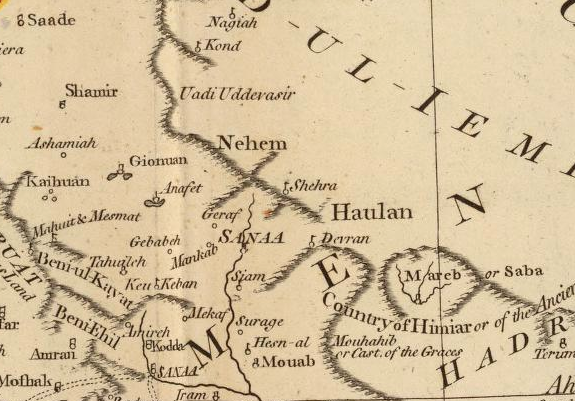I thought someone had posted on here a nice write-up about the problems with NHM/Nahom, but I can't find it in the searches.
It's very possible I'm imagining that it was here, but I thought it was and I'm tired and rundown from work so who knows.
Thank you!Corsair wrote: ↑Mon Nov 30, 2020 3:17 pm
The further problem is how this is a lame bullseye that could simply be a coincidence. Even if it was correct, this does not erase a hundred other anachronisms that each would cast doubt on historicity. The believers can have their NHM and chiasmus party while exactly zero non-LDS Mesoamerican or Middle Eastern archaeologists have the slightest interest in the Book of Mormon.
Great analogy.1smartdodog wrote: ↑Mon Nov 30, 2020 5:15 pm I use to shoot archery in competition. One arrow out of six in the bullseye did not get me anything. To win they all had to hit the bullseye. Anything kess was failure.
Sent from my iPhone using Tapatalk

THIS!John Hamer wrote: ↑Mon Nov 30, 2020 10:03 pm There's no such thing as a bulls-eye — that's not how scholarship works. The Book of Mormon is fully consistent with its composition timeframe, c. 1829-30. The anachronisms make an ancient origin impossible. So "NHM" has zero explanatory value.
One of the Books of the Bible is "Nahum" — the Bible is the source of Joseph Smith's connections to the ancient Semitic world. As a location in Lehi's journey, Nahom is totally irrelevant. It doesn't even rise to the level of coincidence. It's not noteworthy.
John, where do the Comoros Islands and its capital Moroni fall on the scale of something and nothing?John Hamer wrote: ↑Mon Nov 30, 2020 10:03 pm One of the Books of the Bible is "Nahum" — the Bible is the source of Joseph Smith's connections to the ancient Semitic world. As a location in Lehi's journey, Nahom is totally irrelevant. It doesn't even rise to the level of coincidence. It's not noteworthy.
This is great. I would bet that there were Bible commentaries that said "Nahum" means "comforter." I assume that Wikipedia has that correct.John Hamer wrote: ↑Mon Nov 30, 2020 10:03 pm There's no such thing as a bulls-eye — that's not how scholarship works. The Book of Mormon is fully consistent with its composition timeframe, c. 1829-30. The anachronisms make an ancient origin impossible. So "NHM" has zero explanatory value.
One of the Books of the Bible is "Nahum" — the Bible is the source of Joseph Smith's connections to the ancient Semitic world. As a location in Lehi's journey, Nahom is totally irrelevant. It doesn't even rise to the level of coincidence. It's not noteworthy.
Another +1 for this answer.John Hamer wrote: ↑Mon Nov 30, 2020 10:03 pm There's no such thing as a bulls-eye — that's not how scholarship works. The Book of Mormon is fully consistent with its composition timeframe, c. 1829-30. The anachronisms make an ancient origin impossible. So "NHM" has zero explanatory value.
One of the Books of the Bible is "Nahum" — the Bible is the source of Joseph Smith's connections to the ancient Semitic world. As a location in Lehi's journey, Nahom is totally irrelevant. It doesn't even rise to the level of coincidence. It's not noteworthy.

This is Gold, nice research Hagoth.
I think even more interesting than the idea that Joseph coild have been riffing on a map he might have seen is the verification that NHM most likely spells Nehem, not Nahom and Joseph, and the simolarity of the words is coincdental. At LEAST as coincidental as Moroni/Camore.
Here's a scale of "Takes" on the Book of Mormon. Moroni, Comoros Islands, falls somewhere between Meaningless Coincidence and Trivia. It's possible that Joseph Smith saw a map and got it from there, especially if it relates to a Captain Kidd story he was partial too — but it can't be proved and it's ultimately irrelevant trivia.John, where do the Comoros Islands and its capital Moroni fall on the scale of something and nothing?